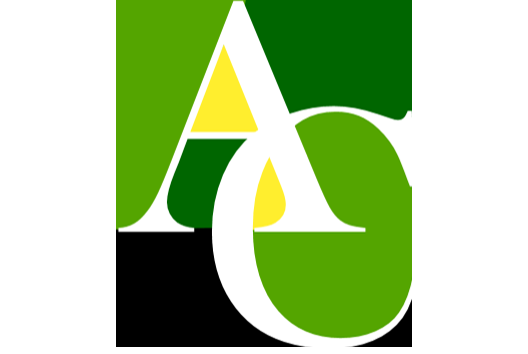Painting in commercial buildings is important for maintaining their aesthetic and structural integrity. The process starts long before the first coat of paint is applied, with surface preparation being the foundation of any successful painting project. Let’s explore the steps involved in preparing surfaces for commercial painting services in Boston, MA.
Why Prep Work for Commercial Painting is Important
The importance of preparation cannot be overstated. It’s the stage where surfaces are readied to ensure optimal paint adhesion, longevity, and aesthetics. Effective preparation helps in identifying and addressing any surface imperfections, which is essential in commercial spaces where appearances significantly impact customer and client perceptions.
What Painting Preparation Work Includes
Preparation for painting encompasses several steps aimed at creating the perfect canvas for paint application. This includes cleaning surfaces to remove dirt and contaminants, repairing any visible cracks and holes, sanding to achieve a smooth finish, applying a primer to enhance paint adhesion, and masking areas that should remain paint-free.
Interior Painting Preparation
When preparing for interior painting, the focus is on creating a clean, smooth surface. This involves protecting or removing furniture and fixtures, cleaning walls with appropriate solutions, repairing wall imperfections, sanding for smoothness, and priming, especially in areas with extensive repairs or new surfaces.
Exterior Painting Preparation
Exterior surfaces require more preparation due to exposure to elements. This typically involves power washing to remove accumulated grime, scraping off loose paint, repairing surface damage like cracks or rot, caulking and sealing gaps to prevent moisture ingress, and priming, especially on exposed and repaired areas.
How to Prepare a Commercial Building for Painting
Preparing a commercial building for painting is an amalgamation of interior and exterior preparation methods. It’s crucial to plan the painting during a period that minimally disrupts business operations and to implement safety measures for exterior work. Selecting suitable paint and materials is key, considering the building’s specific conditions and surfaces. Often, hiring experienced professionals is advisable for complex projects. Post-painting, regular inspections, and maintenance are essential to preserve the paintwork’s quality and appearance.
How to Prepare Concrete
Preparing concrete for painting is a meticulous process. Start by cleaning the surface thoroughly to remove dirt, oil, and grease. Use a degreaser or a suitable cleaning agent for stubborn stains. Once clean, repair any cracks or damage with a concrete filler. Allow the repairs to cure fully before proceeding. Next, etch the surface with a concrete etcher to open up the pores of the concrete, ensuring better paint adhesion. After etching, rinse the surface well and let it dry completely. A primer specifically designed for concrete can then be applied to ensure a uniform and durable paint application.
How to Prepare Wood Surfaces
Wood surfaces require careful preparation to maximize the paint’s lifespan and appearance. Begin by cleaning the wood to remove any dust, dirt, or mildew. Scraping off any loose or peeling paint is crucial, followed by sanding the surface to create a smooth base for painting. Any holes or imperfections should be filled with wood filler and sanded smooth.
If there are signs of moisture or rot, these issues need to be addressed before painting. Priming is essential for wood surfaces, as it helps in sealing the wood and improving paint adhesion.
How to Prepare Metal Surfaces
Metal surfaces present unique challenges due to their propensity for rust and oxidation. Start by removing rust, old paint, and corrosion using a wire brush or sandpaper. After cleaning the metal, it’s important to treat any remaining rust with a rust-inhibitor product. Wash the surface with a degreasing cleaner to remove oils and allow it to dry thoroughly. Applying a metal primer is crucial as it provides a protective layer and helps the paint adhere to the metal surface.
How Professional Painters Prepare Walls for Commercial Painting
Professional painters follow a systematic approach to prepare walls for painting. This includes covering floors and furniture to protect them from paint splatters. Walls are then cleaned to remove dust, grime, and stains. Any holes, cracks, or imperfections in the walls are filled with spackle or plaster and sanded smooth.
Professional painters also take care to caulk gaps around windows, doors, and moldings. Priming the walls is standard practice, especially in areas with stains or where significant repairs have been made. They ensure the primer is completely dry before applying the paint.
The Importance of Professional Painters for Commercial Painting
Professional painters play a vital role in commercial painting projects. Their expertise ensures that the painting job is done efficiently, quickly, and to a high standard. They have the knowledge to choose the right type of paint and materials for different surfaces and conditions. Professional painters are also skilled in employing advanced techniques and tools to achieve a superior finish. Their attention to detail in the preparation and application phases can significantly extend the lifespan of the paint job. Moreover, hiring professionals minimizes disruptions to business operations and guarantees safety, especially in large or complex projects.
Contact Arthur Cole Painting Corporation to Request a Quote for Commercial Painting Services in Boston, MA
For top-quality commercial painting services in Boston, MA, contact Arthur Cole Painting Corporation. Our team of professional painters is equipped to handle all your commercial painting needs, from thorough surface preparation to the final coat. We pride ourselves on delivering exceptional workmanship and customer service. Contact us to request a quote and let us transform your commercial space with commercial painting services in Boston, MA.
